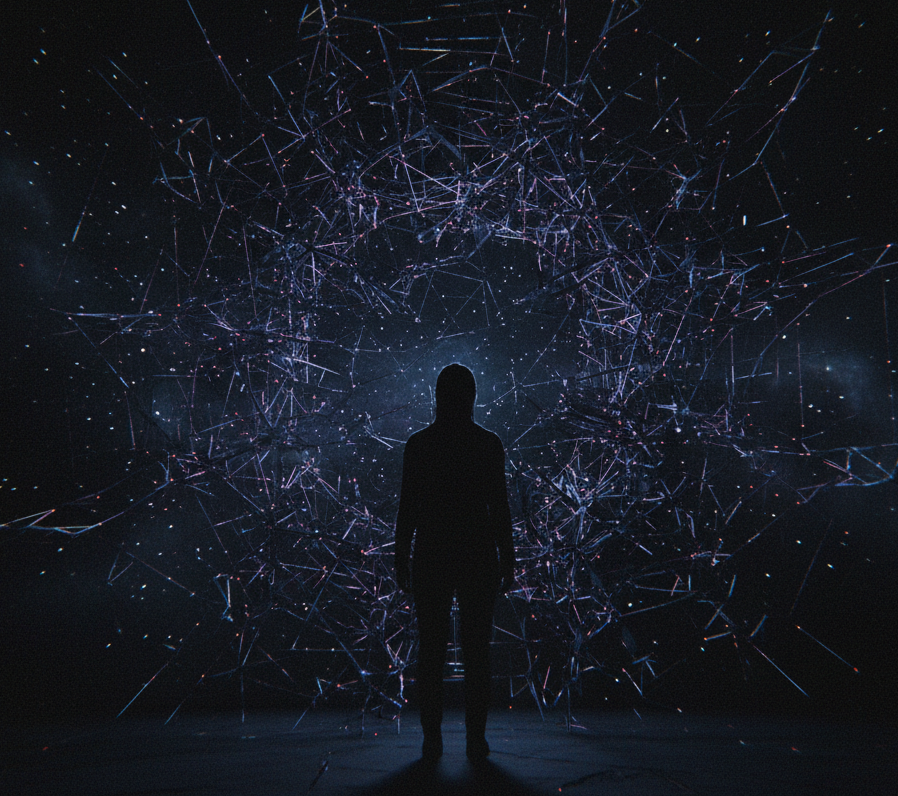The psychedelic influence of Silicon Valley
In the spotless hallways of Palo Alto’s offices or in the hipster cafés of San Francisco, a transformation is taking place that can hardly be perceived from the outside. Silicon Valley, cradle of the great technological revolutions, is experiencing another one, less visible and perhaps deeper: the integration of psychedelics into working life.
Far from their countercultural stigma, psychedelics have become a strategic tool. They are no longer an individual experiment but an emerging cultural phenomenon that seeks to enhance creativity, combat chronic exhaustion and redefine well-being in the planet’s most competitive environment.
The impact of this practice is not limited to a handful of eccentric visionaries: market studies project that the global psychedelic therapy industry will exceed $11 billion by 2027, consolidating what was until recently a taboo into a sector of medical and business innovation.

From counterculture to source code
Long before the technological creed proclaimed "move fast and break things", San Francisco Bay pulsed to another motto: expand consciousness. The 1960s turned the city into the epicenter of psychedelia, and far from coincidence, the link between that inner quest and the rise of personal computing proved decisive.
Figures like Stewart Brand, with his Whole Earth Catalog—described by Steve Jobs as “Google in pocket format 35 years before it existed”—built a bridge between hippie idealism and the garage workshops where the first personal computers were born. The premise was the same: tools, technological or mental, could liberate human potential.
This vision left a mark on Jobs, who declared that his experience with LSD was one of the most important of his life. It was not a hobby, but a catalyst for intuitive design and the aesthetic conception that turned Apple into a cultural icon. History thus shows that Silicon Valley’s radical imagination arose from both code and inner journeys.
Turning off the CEO, turning on creativity
When engineers talk about hacking the mind, it’s not just a metaphor. Journalist Michael Pollan, in his influential book How to Change Your Mind, documented the new wave of scientific research that has highlighted this phenomenon. Prestigious institutions such as the Johns Hopkins University Center for Psychedelic and Consciousness Research have shown that psychedelics affect the Default Mode Network (DMN), the system responsible for maintaining our sense of identity and constant loops of thought. Reducing its activity is like “sending the CEO on vacation”: it frees up collaboration between brain regions that rarely interact, generating new perspectives and solutions.
In Silicon Valley, this knowledge has given rise to two distinct paths. On the one hand, microdosing, which consists of ingesting almost imperceptible amounts of psychedelics to, according to its followers, increase focus and creativity in daily routines. On the other hand, macrodosing, an intense guided experience reserved as a profound ritual to face existential dilemmas or reinvent a career.
This temporary shutdown of the brain’s “CEO” is not just a theory. The New York Times documented the case of Ken, a young Silicon Valley programmer who had been stuck for weeks on a complex compression algorithm. After taking a dose of LSD during a weekend walk, the solution appeared to him with absolute clarity while observing cloud patterns. He ran home and, in a state of creative flow, solved the problem that had tormented him. Ken’s case is a paradigmatic example of how a macrodose can catalyze an “eureka moment”, turning a technical block into a revelation.

The business of consciousness
But not everyone seeks a transcendental experience. The most widespread side of this phenomenon is the pragmatic use of microdosing for professional optimization. WIRED magazine profiled Robert, a software engineer in his forties who perfectly sums up this trend. Robert takes microdoses of psilocybin three times a week not to hallucinate, but to have, in his words, "a day where you’ve slept very well, meditated, and had an excellent coffee". His aim is efficiency: engaging in more empathetic conversations, gaining a competitive edge, and ultimately seeing problems from new angles. Robert’s case introduces us to the new ecosystem that has emerged around this practice, populated by new guides, investors, and exclusive retreats. At the center of this ecosystem has arisen a new profession: the psychedelic integration therapist, a professional who helps executives translate the revelations of their experiences into concrete changes.
The user profile goes beyond the programmer looking for an edge. Writer Ayelet Waldman documented in her book A Really Good Day her own one-month experiment with LSD microdoses. Her goal was twofold: to overcome a severe creative block and to treat a mood disorder. Her testimony details how the practice gave her back not only fluency in writing but also an emotional stability she thought lost. Her case demonstrates how psychedelics are positioning themselves on the thin line separating professional optimization from mental health treatment, an area attracting millions in investment.
Venture capital has spotted the opportunity. Investors such as Peter Thiel and Tim Ferriss have invested money in startups like Compass Pathways, a pioneer in psilocybin therapies. The discourse of “mental health” coexists with strategies of commercial expansion on a global scale.
For the most privileged, there are experiences designed with the care of a luxury brand: ayahuasca retreats in Costa Rica or corporate psilocybin ceremonies in Santa Cruz, where introspection is mixed with jacuzzis, private chefs, and panoramic views of the Pacific.
The B-side of the trip: risks, ethics, and privilege
Despite the enthusiasm and progress, this brain hacking is not free of shadows. For those predisposed to disorders such as schizophrenia or bipolar disorder, using psychedelics can trigger severe episodes, and a bad trip without proper support can leave deep emotional scars. It is not a panacea, but a powerful tool that demands respect, knowledge, and professional guidance.

At the same time, an uncomfortable and urgent question arises: who really benefits from this revolution? While the tech elite explore their consciousness in carefully orchestrated, safe retreats, other communities, especially minority ones, continue to pay the disproportionate consequences of the so-called “War on Drugs.” There is a tangible risk that these ancestral and sacred practices will be stripped of their cultural context and gentrified, reduced to a new luxury product detached from their roots.
But the expansion of this psychedelic culture also brings new tensions within the workplace itself. As these practices become normalized, some workers may feel the pressure, explicit or implicit, to participate so as not to fall behind in creativity or open-mindedness. The line between a genuine corporate wellness program and an invasion of psychological autonomy begins to blur, raising troubling questions about how far mind control should go in the workplace.
The future is psychedelic (and regulated)
The legal and cultural landscape surrounding psychedelics is rapidly evolving. Progressive cities such as Oakland and Santa Cruz have already decriminalized the use of natural psychedelic substances, while at the federal level, the FDA is in advanced stages of approving psilocybin and MDMA as medical treatments for conditions such as post-traumatic stress and depression. Full medical legalization seems a near horizon, where the debate will be less about “if” and more about when and how.
Imagine a not-so-distant future where corporate health insurance policies include psychedelic-assisted therapy sessions, designed to prevent burnout and optimize employee well-being. Silicon Valley, which gave us the digital revolution and the technology we carry in our pockets, could now be paving a new path: the inner revolution. The great challenge will be to navigate this frontier with the wisdom that may have been lacking in building the digital world. It is not only about adopting new tools to enhance the mind, but doing so with ethics, respect, and a critical perspective that avoids reproducing inequalities and respects the deep cultural roots that have accompanied these practices for millennia. Only in this way will this silent revolution be truly transformative, not just for Silicon Valley but for society as a whole.

"True innovation is not only in the code we write or the machines we build. It is in the courage to look within, to question who we are and how we can transcend our mental limitations. Psychedelics, handled with respect and wisdom, offer us a key to deeper consciousness and unprecedented creativity. Silicon Valley is not only reinventing technology: it is redesigning the human mind." — Ayelet Waldman, writer and advocate of therapeutic psychedelic use.
Reference sources
- Waldman, Ayelet. A Really Good Day: How Microdosing Made a Mega Difference in My Mood, My Marriage, and My Life. Alfred A. Knopf, 2017.
- Williams, Alex. "How to Disappear in Silicon Valley (for a Day, at Least)." The New York Times, March 11, 2017.
- Smiley, Lauren. "The Jolly, Judgy World of Microdosing." Wired, January 29, 2016.




















